Pet
QT Why Is My Dog Drinking So Much Water?
Do you often find yourself wondering why your dog is constantly drinking water?
It’s not unusual for dogs to drink more water than usual, but excessive thirst can be a sign of an underlying health issue. As a responsible pet owner, it’s important to understand the reasons behind your dog’s increased water intake and take the necessary steps to ensure its health and well-being.
In this article, we’ll explore some of the common reasons why dogs may drink more water than usual. We’ll discuss both behavioral issues and medical conditions that can cause excessive thirst in dogs.
Additionally, we’ll provide tips on how to monitor your dog’s water intake and when it may be time to visit the vet. By understanding normal water intake for dogs and recognizing potential signs of dehydration or illness, you can help your beloved pet maintain optimal health.
Table of Contents
Understanding Normal Water Intake for Dogs
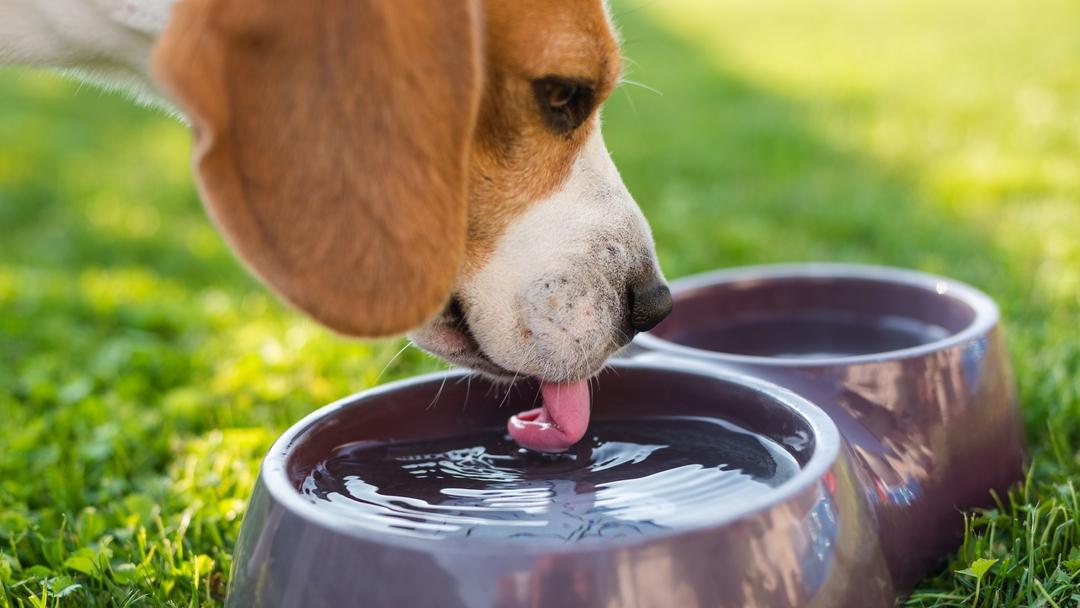
Did you know that your furry friend’s normal water intake should be about an ounce of water per pound of body weight? This means that if your dog weighs 50 pounds, they should be drinking around 50 ounces or just over six cups of water a day. However, this amount can vary depending on factors such as activity level, diet, and environmental conditions.
One thing to consider is the placement of your dog’s water bowl. It should be easily accessible and located in a quiet area where they feel comfortable drinking from it. Also, make sure to clean the bowl regularly to prevent any bacteria buildup that could discourage your pup from drinking enough water.
If you’re concerned about your dog not drinking enough water, there are options like drinking fountains designed specifically for pets that may encourage them to drink more. These fountains provide fresh, oxygenated water and often have filters that remove impurities.
With proper knowledge about normal water intake for dogs and how to ensure their access to clean drinking water, dehydration in dogs can often be prevented. However, if you notice signs such as excessive panting or lethargy, it may indicate dehydration and require immediate veterinary attention.
Dehydration in Dogs
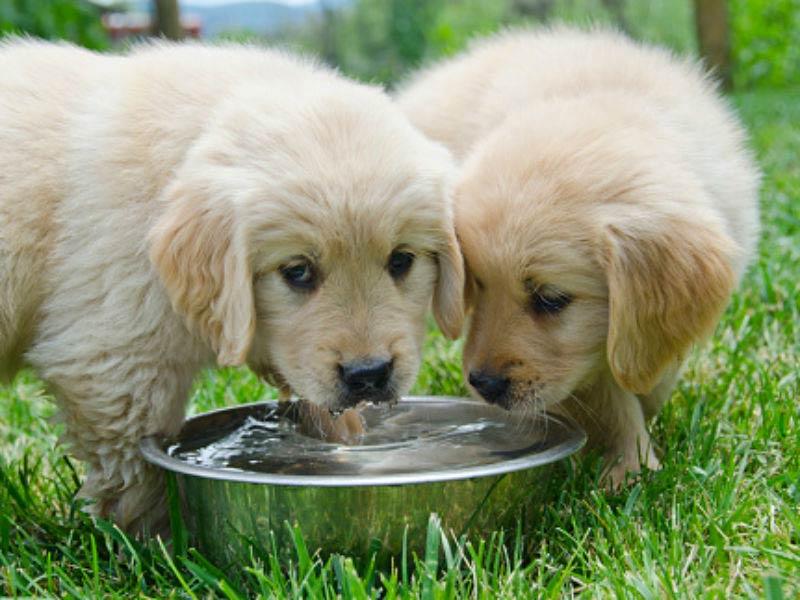
When dogs don’t get enough fluids, their bodies become parched and dehydration is a serious issue that can lead to multiple health problems in your furry friend. The following bullet list will give you an idea of how important hydration is for dogs:
- Dehydration causes lethargy and weakness in dogs.
- If left untreated, it can lead to kidney failure and other organ damage.
- Your dog’s urine will become more concentrated when they are dehydrated.
- They may pant excessively or have dry gums and nose.
- Proper hydration management can prevent dehydration.
Dehydration prevention involves keeping your dog hydrated at all times. Make sure there is always fresh water available for them to drink, especially during hot days or after physical activity. In addition, monitor your dog’s water intake daily and adjust accordingly if you notice any changes in behavior or appetite.
Hydration management also includes feeding your dog a balanced diet with the right amount of moisture content. Wet food or adding water to dry kibble can help increase their fluid intake. If you’re unsure about how much water your dog needs, consult with your veterinarian for guidance.
Next up, we’ll discuss health conditions that cause excessive thirst in dogs. It’s important to be aware of these conditions so that you can identify any potential issues early on and seek proper treatment for your furry friend.
Health Conditions That Cause Excessive Thirst

Identifying health conditions that lead to excessive thirst in dogs is crucial for maintaining their overall well-being, as it can indicate underlying medical issues.
One of the most common causes of increased water intake in dogs is kidney disease. This condition affects the ability of the kidneys to filter waste products from the blood, which leads to an accumulation of toxins and excess fluids in the body. As a result, dogs with kidney disease may drink more water than usual to help flush out these harmful substances.
Another health condition that can cause excessive thirst in dogs is diabetes. Dogs with diabetes have high levels of glucose (sugar) in their blood due to a lack of insulin or insulin resistance. The excess glucose pulls fluid from surrounding tissues, leading to dehydration and increased thirst. If left untreated, diabetes can also damage the kidneys over time and exacerbate symptoms.
In addition to kidney disease and diabetes, there are other Health conditions that can cause your dog to drink more water than normal. These include Cushing’s syndrome (an endocrine disorder), hypercalcemia (high levels of calcium in the blood), and liver disease.
It’s important to consult with your veterinarian if you notice any changes in your dog’s drinking habits, as prompt diagnosis and treatment can prevent further complications down the line.
Now let’s explore behavioral issues that cause excessive drinking without delay!
Behavioral Issues That Cause Excessive Drinking

Sometimes, our furry friends may develop behavioral issues that result in them becoming more fond of the water bowl than usual. It can be frustrating when your dog is constantly drinking water and causing you to worry about their health. If your dog has been checked by a veterinarian and there are no underlying medical conditions causing excessive thirst, then it’s time to look at their behavior.
Here are three common behavioral issues that can cause excessive drinking:
- Boredom – Dogs who lack proper stimulation may turn to drinking water as a way to pass the time. Providing plenty of toys, exercise, and attention can help reduce boredom-related drinking.
- Anxiety – Dogs who suffer from anxiety or separation anxiety may drink more water as a coping mechanism. Behavioral modification techniques such as desensitization training, anxiety medication, or soothing music can help alleviate anxiety-related behaviors.
- Learned Behavior – Some dogs learn that if they drink all the water in their bowl quickly, they’ll receive extra attention or treats from their owners. Training techniques such as positive reinforcement for calm behavior around the water bowl can help break this cycle.
Understanding why your dog is excessively drinking is important for helping them overcome this behavior. In the next section, we’ll discuss how to monitor your dog’s water intake and establish healthy drinking habits for them moving forward.
How to Monitor Your Dog’s Water Intake
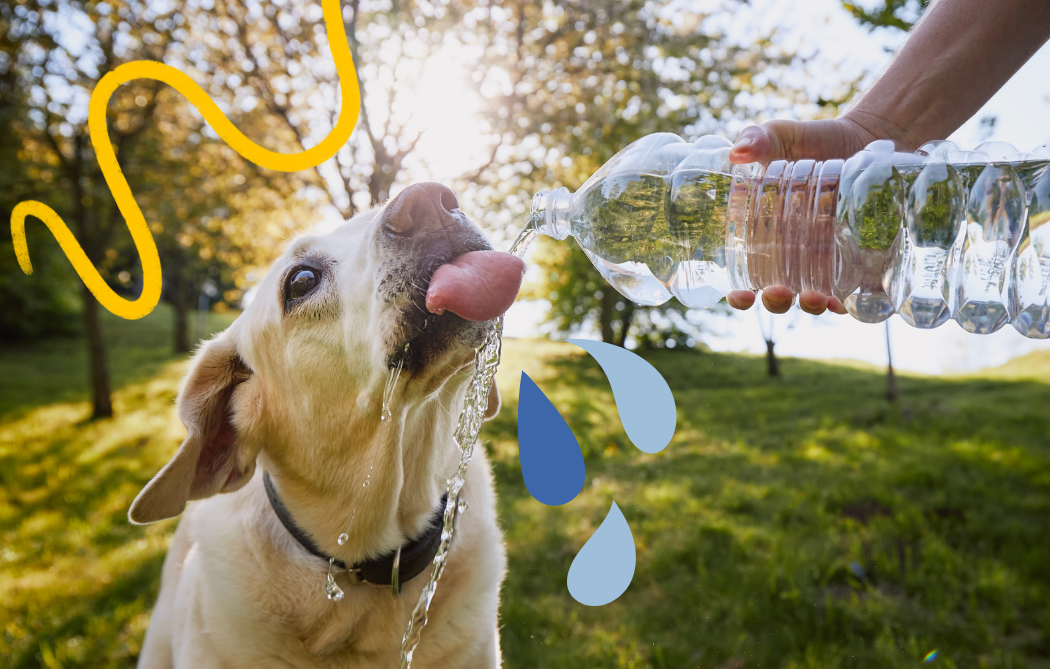
If you’re concerned about your dog’s excessive water intake, there are a few things you can do to monitor their habits. One of the best ways is to keep a water diary, noting how much they drink each day and at what times.
You should also pay attention to their urination patterns and take note if there are any changes or abnormalities.
Lastly, a physical examination by a veterinarian can help determine if there are any underlying health issues causing your dog’s increased thirst.
Keeping a Water Diary
Keeping a water diary can be helpful in tracking your dog’s hydration levels. Studies show that dogs need about an ounce of water per pound of body weight each day. Here are some tips to help you keep an accurate record:
- Use a designated notebook or app to track your dog’s water intake.
- Record the time and amount of water your dog drinks throughout the day.
- Note any changes in behavior or activity level that may affect their thirst.
- Keep track of environmental factors, such as temperature and humidity, which may also affect their hydration needs.
By tracking habits and identifying patterns, you can ensure that your furry friend is getting enough water to stay Healthy and hydrated.
Paying attention to urination is another important aspect of monitoring your dog’s hydration levels, so let’s move on to the next step.
It’s important to note that maintaining proper hydration for your dog isn’t just about how much they drink; it’s also about how much they eliminate through urination. Let’s explore this topic further in the following section.
Paying Attention to Urination
To ensure your furry companion is properly hydrated, it’s crucial to pay attention to their urination patterns. This understanding can give insights into their overall health. As you monitor your dog’s water intake, also take note of how often they urinate and the color of their urine.
Urination patterns can vary depending on age, breed, diet, and activity level. However, changes in frequency or color may indicate an underlying issue. Normal urine should be pale yellow to amber in color and odorless. If you notice a change in color such as dark yellow or orange, it could mean that your dog is dehydrated or has an underlying health condition.
On the other hand, if their urine is clear or diluted-looking, it could indicate overhydration. Paying attention to these details can provide valuable information for your veterinarian during a physical examination.
Physical Examination
During a physical examination, the veterinarian will carefully examine your furry friend to assess their overall Health and any potential issues. This includes checking your dog’s vital signs such as heart rate, respiratory rate, temperature, and blood pressure. The vet will also conduct a thorough physical exam of your dog’s body including their eyes, ears, mouth, skin, and coat.
When it comes to excessive thirst in dogs, there can be various causes such as diabetes mellitus or kidney disease. During the physical examination, the veterinarian may feel for any swollen lymph nodes or tumors that could be causing an increased water intake.
It’s important to schedule regular check-ups with your vet to catch potential health problems early on and address them promptly before they become more serious.
If you suspect something is wrong with your furry companion, don’t delay in visiting a vet.
When to Visit the Vet
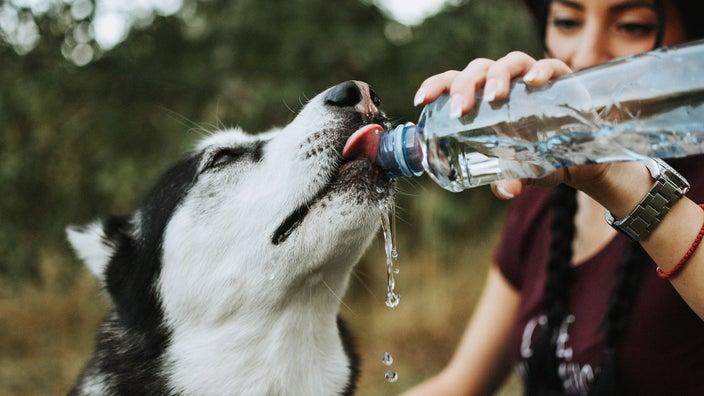
If you notice any concerning changes in your dog’s behavior or physical health, it’s important to schedule a visit with the vet.
Some common signs that your dog may need medical attention include vomiting, diarrhea, lethargy, and loss of appetite.
During a vet visit, you can expect an examination of your dog’s overall health and potentially further testing or treatment recommendations based on their findings.
Signs That Your Dog Needs Medical Attention
Hey, if your furry friend is showing any of the following signs, it’s time to visit the vet ASAP!
One of the most common signs that your dog needs medical attention is excessive drinking and urination. If you notice that your dog is constantly thirsty and has to go outside more frequently than usual, it could be a sign of diabetes, kidney disease or other serious conditions. Don’t wait until it’s too late – take your pup to see a veterinarian right away.
Other signs that may indicate a need for veterinary care include loss of appetite, vomiting, diarrhea, lethargy and sudden weight changes. Depending on the condition affecting your pet, possible treatments and cost of vet visits can vary greatly. However, in all cases prompt medical attention is crucial for successful outcomes.
Remember – early detection and treatment often lead to faster recovery times and less expensive treatments down the road. So don’t hesitate – schedule an appointment with your vet today!
And when you do visit the vet, here’s what you can expect…
What to Expect During a Vet Visit
When you take your furry friend to the vet, you can expect to be greeted with open arms and a warm welcome, as though they’re an old friend returning home. The vet will then ask you about your dog’s symptoms and medical history before conducting a physical examination.
Depending on the situation, possible causes of excessive water intake may include diabetes, kidney disease, or hormonal imbalances. To determine the underlying issue, diagnostic tests such as blood work, urinalysis, or imaging may be necessary.
Once a diagnosis is made, treatment options will vary depending on the specific condition. For example, managing diabetes may require insulin injections and dietary changes while treating kidney disease may involve medication and specialized diets. It’s important to follow up with your vet regularly to monitor your dog’s progress and adjust treatment plans as needed.
In addition to medical intervention, providing fresh water and ensuring adequate hydration is important for overall health. Tips for ensuring your dog’s health and well-being include regular exercise and proper nutrition – both of which can help prevent many health issues that lead to increased thirst in dogs.
Tips for Ensuring Your Dog’s Health and Well-being
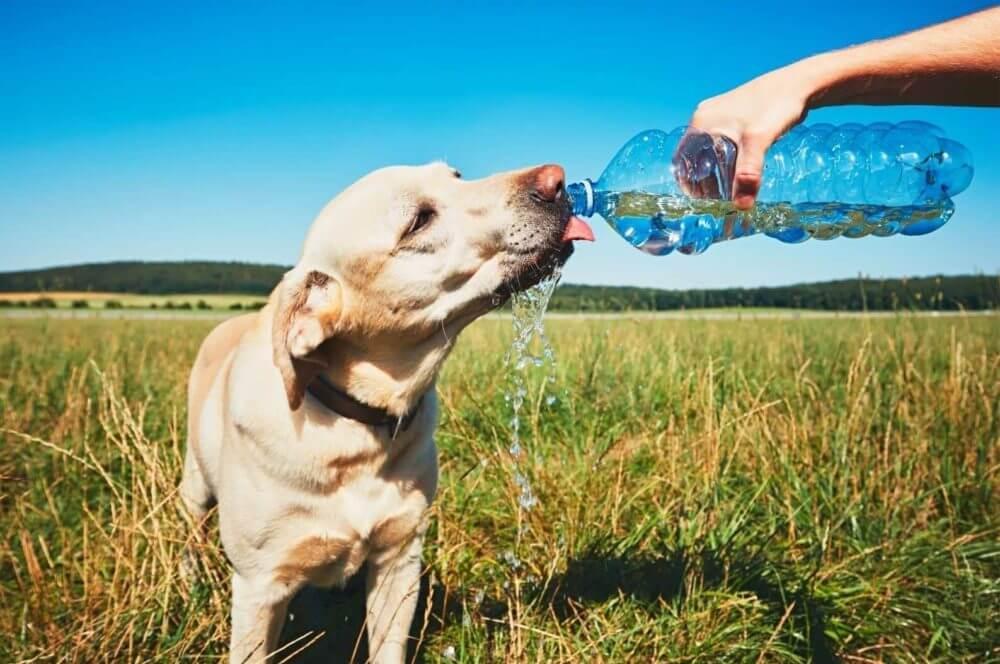
Maintaining your dog’s health and well-being is crucial, so it’s important to follow these tips.
First of all, make sure that you’re providing your furry friend with a well-balanced diet that meets their nutritional needs. Consult with your veterinarian to determine the best type of food for your dog based on their age, breed, weight, and overall health condition.
In addition to a healthy diet, regular exercise is also essential for keeping your pup in good shape both physically and mentally. Take them for daily walks or runs, play fetch or tug-of-war games with them, or enroll them in obedience training classes. This will not only help them burn off energy but also strengthen the bond between you two.
Lastly, be sure to schedule regular check-ups with your vet to stay on top of any potential health issues before they become more serious problems. Your vet can provide recommendations for preventive care such as vaccinations and parasite control measures.
By following these tips for ensuring your dog’s health and well-being, you can enjoy many happy years together with your furry companion!
Conclusion
So now you know why your dog may be drinking more water than usual. Whether it’s due to normal circumstances, dehydration, Health conditions, or behavioral issues, there are ways to monitor and address the situation.
Remember to keep an eye on your furry friend’s drinking habits and take note of any changes. If you suspect something’s wrong with your dog’s water intake or behavior, don’t hesitate to visit the vet for a professional opinion.
It’s always better to be safe than sorry when it comes to your Pet’s Health and well-being. By being proactive and attentive, you can ensure that your dog stays hydrated and Healthy for years to come.
-

 Pet1m ago
Pet1m agoCelebrating Me: A Journey of Self-Love and Independence on My 5th Birthday.lamz
-

 Pet2m ago
Pet2m agoHeroic Rescue and Heartwarming Adoption: A Brave Police Officer’s Unforgettable Journey with an Adorable Puppy.hanh
-

 Pet2m ago
Pet2m ago¡Felicidades en tu día! Tranquilo, ¡los mejores deseos siempre llegan cuando tienen que llegar!.lamz
-
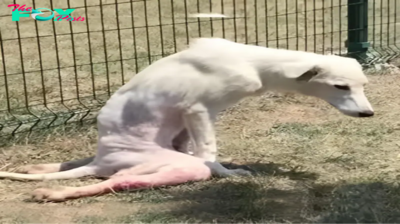
 Pet2m ago
Pet2m agoFrom Abandoned to Empowered: A Dog Reclaims Its First Steps After Being Left Behind.hanh
-

 Pet2m ago
Pet2m agoA Silent Celebration: My Birthday 🎂🎁🎈🎉 Without Wishes Yet.hanh
-

 Pet2m ago
Pet2m agoA pesar de una década de devoción, Annie fue cruelmente abandonada como si no fuera nada cuando su dueño se fue.lamz
-

 Pet2m ago
Pet2m agoFrom Neglect to Nurture: Transforming a Skeletal Stray Dog with Unconditional Love.hanh
-

 Pet2m ago
Pet2m agoAn inspiring tale of rescuing two innocent puppies from heartless sellers, emphasizing the importance of compassion and protection for vulnerable animals.hanh


























